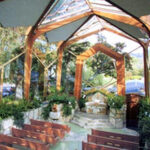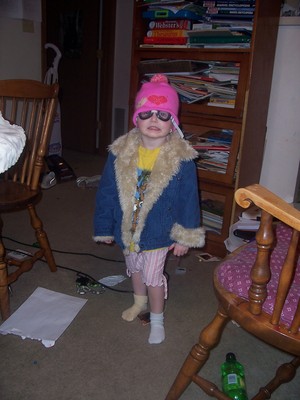Holy Trinity Episcopal Church has always touched our family. Our nephew attended the Holy Trinity Episcopal Academy until he went on to West Shore High School. Our family has attended many events and fundraisers. My parents resided in Melbourne Village. When my mother passed away a quiet service was held in the original church, which is now the chapel. The church has a rich history that I am still learning about and find fascinating.
The Goode Family and How Melbourne Got Its Name: The Goode and the Beaujean families were pioneer settlers in Brevard County. Richard Goode’s strawberry farm, Villa Ridge, was destroyed by a tornado and hail storm that ripped through their part of Illinois. The family packed up what they had and left the cold north. Using insurance proceeds they moved to the lush, buggy, and wild lands of Florida in 1877. Not an easy trip. They did not have to travel by stage coach, but the family endured traveling by train, steamboat, ox cart and sailboat. They built a small cabin, into which they welcomed new settlers that needed a roof over their heads until they could build their own homes. An occupant of their home was Cornthwaite John Hector who was born in Australia, fought in New Zealand, and finally came to Ameriica. The Goodes and Hector knew they needed a name for their new settlement which would allow them to have a post office.
Jessie Goode, mom of the household, had her daughter Grace fetch a broom from which she pulled a sea oat straw and broke it into three varying lengths. The names were narrowed down to Melbourne (the long straw), Villa Ridge (the short one) and Fountain Heights (the middle length straw). These she hid in Grace’s palms. Hector drew a straw, the longest one, and Melbourne was so named.
Hector became the first postmaster for the new town of Melbourne (1880), owned a store, and organized a community band. Hector was described as “tall, heavy-set, with white hair and a great square beard. He was strong as a bull.” The mail, by the way, arrived by sailboat twice a week. Water yet again as a means of daily travel. Peter Wright, a black freedman and an earlier settler, was known as the sailing mailman in the area. I do not mind losing Saturday mail delivery; at least we get it five days a week.
The Goode Family and Holy Trinity: In 1879 Richard Goode offered his home for the baptismal and church services. Jessie wanted to have their children Annie and young Jessie baptized. Mom Jessie learned that Bishop Young and Archdeacon Carpenter were going to be in the area and she made arrangements within her home for their baptismal ceremony. Jessie Goode placed a breadboard and a tablecloth over her sewing machine and they had an instant altar. Only about 50 people resided in the Melbourne area in the 1884 when about 30 of those residents named their congregation Holy Trinity and established the organization of their church.
The Building of the First Holy Trinity Church: Mrs. Lucy Boardman unexpectantly visited the congregation from Georgiana on Merritt Island (another boat trip) and generously bought and donated to them four acres of land on the southern bank of Crane Creek and provided plans for the construction of the Carpenter Gothic style church building. Lucy had a passion and a mission to help build Episcopal churches. The first service in the now quaint and small chapel was given two days after Christmas in 1886 by the Reverend Dr. William Porcher DuBose.
Getting around Melbourne in those days involved a lot of travel by boat or ferry and foot. The churchgoers who resided on the north side of Crane Creek did just that. They boated across the creek to go to services or used the footbridge. In 1897 the church building was moved to the north side of Crane Creek to land donated by William and Nora Stanford Wells at Fee Avenue and Route 1.
In 1923 the church received a gift of a bell and belfry from the Goode family. Remember my sharing that the first altar was a covered sewing machine? In 1932, the Frazer and Campbell families provided oak for the carved altar used today in the chapel. In 1949 the congregation became a parish with the Episcopal Diocese of Central Florida. The parish purchased land on Strawbridge Avenue to construct a new church, offices and classrooms. This was the beginnings of Holy Trinity Episcopal Academy in 1958. The small church was moved again in 1963 to its current location at 50 West Strawbridge Avenue in Melbourne as a chapel neighboring the newly built church. The Academy was originally for 3 year olds through 12th grade, but now the middle and high school students attend the academy located on a 40 acre tract of land in North Melbourne.
One of the more interesting, to me, projects of the church is the building of Trinity Towers, apartment complexes designed to assist seniors; my father lived in Trinity Towers South for about three years and loved the friendships he developed.
The mission of Holy Trinity is to “Know Christ and make Him Known. Amen.
Sources:
From an account written by Grace Beaujean Mercier for the Melbourne Centennial Celebration in 1980
Information from “The Hunt for C. J. Hector” by Zillah Williams, of Canberra,Australia, published in Brevard County’s Indian River Journal, Vol. 5, no. 1, Spring/Summer 2006.




